


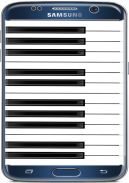
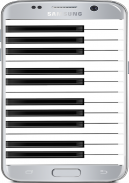
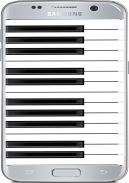
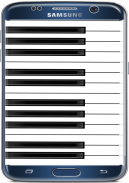

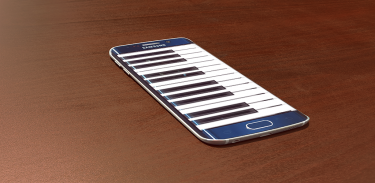
Real Piano

Real Piano का विवरण
The piano is an acoustic, stringed musical instrument invented around the year 1700, in which the strings are struck by hammers. It is played using a keyboard, which is a row of keys that the performer presses down or strikes with the fingers and thumbs of both hands to cause the hammers to strike the strings. The word piano is a shortened form of pianoforte, the Italian term for the early 1700s versions of the instrument, which in turn derives from gravicembalo col piano and forte piano. The Italian musical terms piano and forte indicate "soft" and "loud" respectively, in this context referring to the variations in volume produced in response to a pianist's touch or pressure on the keys: the greater the velocity of a key press, the greater the force of the hammer hitting the strings, and the louder the sound of the note produced and the stronger the attack. The first fortepianos in the 1700s had a quieter sound and smaller dynamic range.
पियानो साल 1700, जिसमें तार हथौड़ों के घेरे में आ रहे हैं चारों ओर का आविष्कार एक ध्वनिक तार वाद्य यंत्र है। यह एक कुंजीपटल है, जो चाबियों का एक पंक्ति है कि कलाकार नीचे प्रेस या उंगलियों और दोनों हाथों के अंगूठे के साथ हमलों हथौड़ों तार हड़ताल पैदा करने के लिए है का उपयोग कर खेला जाता है। शब्द पियानो pianoforte का एक छोटा रूप, साधन, जो बारी में gravicembalo col पियानो और विशेष क्षमता पियानो से निकला है के प्रारंभिक 1700 के दशक के संस्करणों के लिए इतालवी शब्द है। इतालवी संगीत मामले पियानो और forte "नरम" और "जोर" से संकेत मिलता है क्रमशः, इस संदर्भ में मात्रा में बदलाव एक पियानोवादक के स्पर्श या कुंजी पर दबाव के जवाब में उत्पादित की चर्चा करते हुए: अधिक से अधिक एक कुंजी दबाने के वेग, अधिक से अधिक हथौड़ा तार से टकराने की शक्ति है, और जोर से टिप्पणी उत्पादित की आवाज और मजबूत हमले। 1700 के दशक में पहली fortepianos एक शांत ध्वनि और छोटे गतिशील रेंज था।

























